Taking Stock of Protected Bikeways 10 Years Later
As CalBike celebrates its 30th anniversary, it’s an excellent time to look at one of our accomplishments that turns 10 this year: the Protected Bikeway Act of 2014, AB 1193. Authored by Assemblymember Phil Ting and sponsored by CalBike, the bill created a new class of bike lane: Class IV, also called cycletracks. These are on-street bikeways separated from vehicular traffic by a physical barrier, and they have been a game changer for bike riders in California.
Before the Protected Bikeways Act
Before our bill was signed into law, Caltrans design standards didn’t allow bike lanes separated by bollards, curbs, planters, or other barriers, even though other states were implementing protected bike lanes and NACTO had issued design guidance.
Class I bikeways are physically separated from traffic, but these are off-street paths. While Class I bikeways are low-stress and appealing to many riders, they can be hard to construct due to high costs and space limitations.
Class IV bikeways, on the other hand, can be added during roadway repaving projects and don’t require the acquisition of off-road rights of way, though there may still be issues with repurposing road space from driving or parking to active transportation. California had a few of these separated lanes before this law was passed. But local governments, concerned about liability if they built infrastructure not sanctioned by Caltrans, were still mostly adding Class II bikeways, which are delineated by paint only.
“The Protected Bikeways Bill gave engineers the last big tool they needed to design safe roads for people biking anywhere. They were practically prohibited from building them prior to that bill,” said Dave Snyder, who was CalBike’s Executive Director during the campaign to pass and implement this law. “Then we had to promote them to engineers and planners all over the state. We also educated elected officials so they knew the importance of protected bike lanes in case their engineers were recalcitrant, which happened.”
Next step: implementation
Before communities could install new, protected bikeways, Caltrans had to issue design guidance, and it didn’t do that until December 30, 2015. Caltrans’ design information bulletin on Class IV bikeways has been updated, mostly recently in 2022, and connects to other more recent Caltrans design guidelines for Complete Streets. Physically separated bikeways, which have been shown to reduce fatalities for all road users, are an element of many Complete Streets designs. So, legalizing these lanes 10 years ago now supports the Complete Streets Law, which CalBike sponsored and helped pass this year.
But passing the law and getting design guidelines from Caltrans wasn’t the end of CalBike’s work to promote protected bikeways. With help from Alta Planning + Design, we published and distributed a four-page brochure and hosted a webinar to inform planners and public works departments, as well as advocates, about the new regulations.
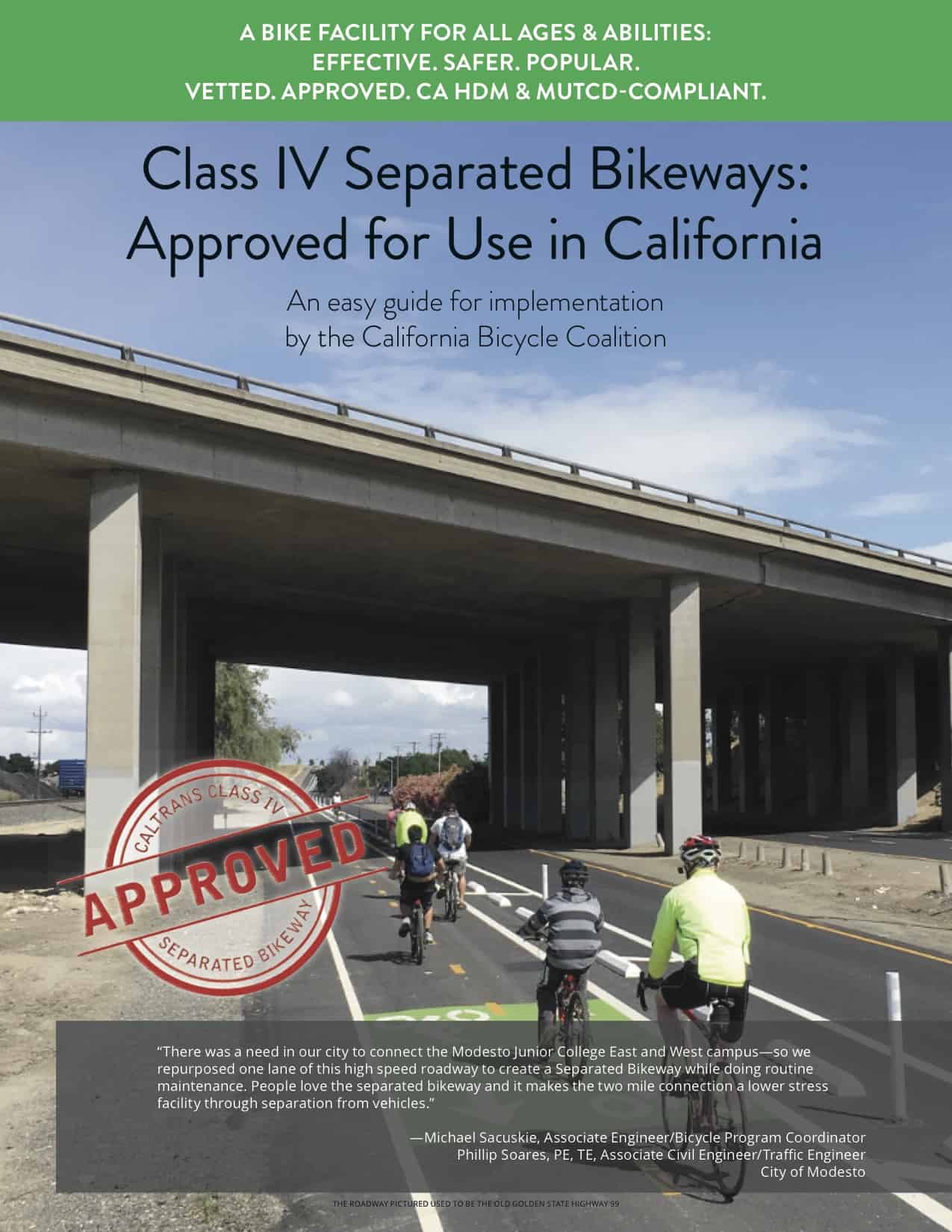
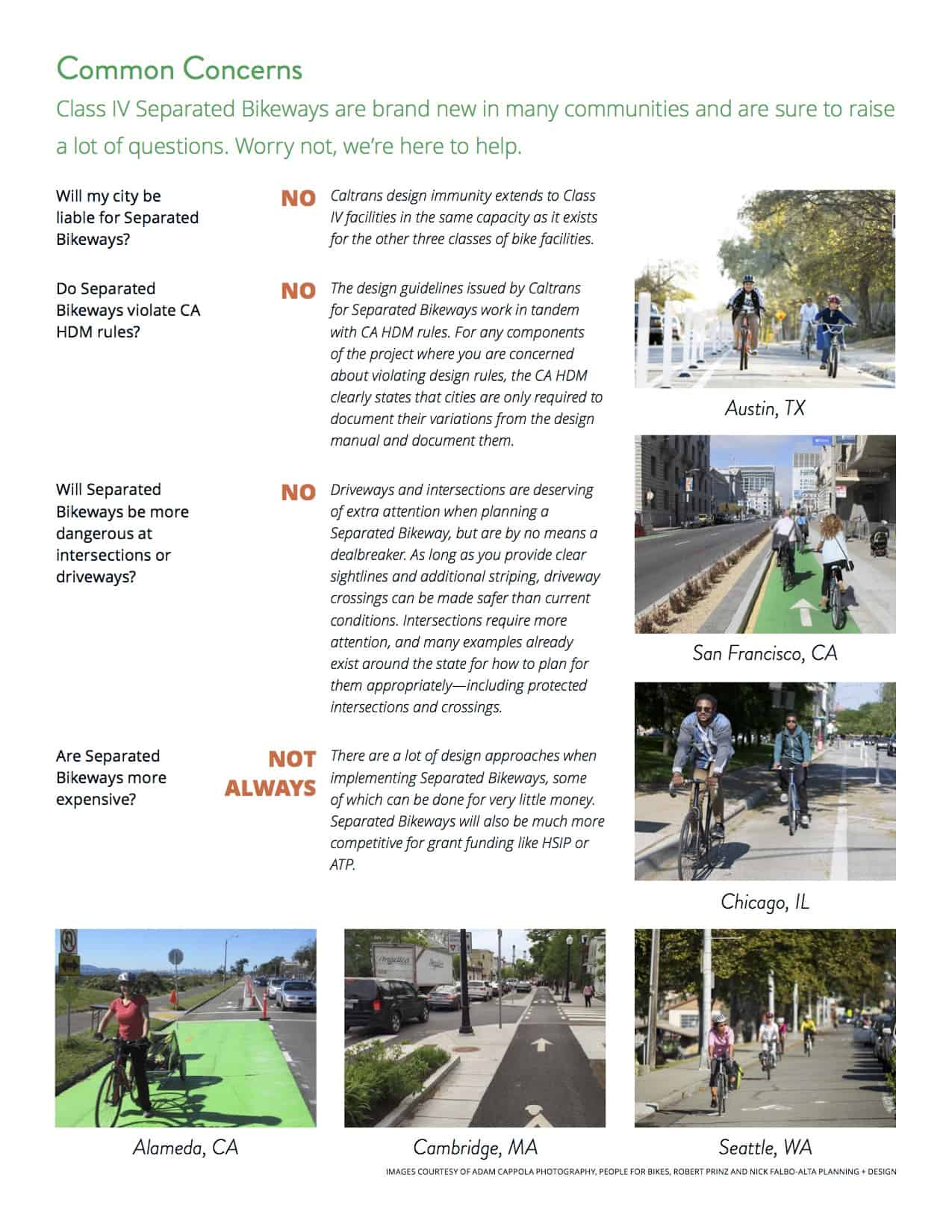
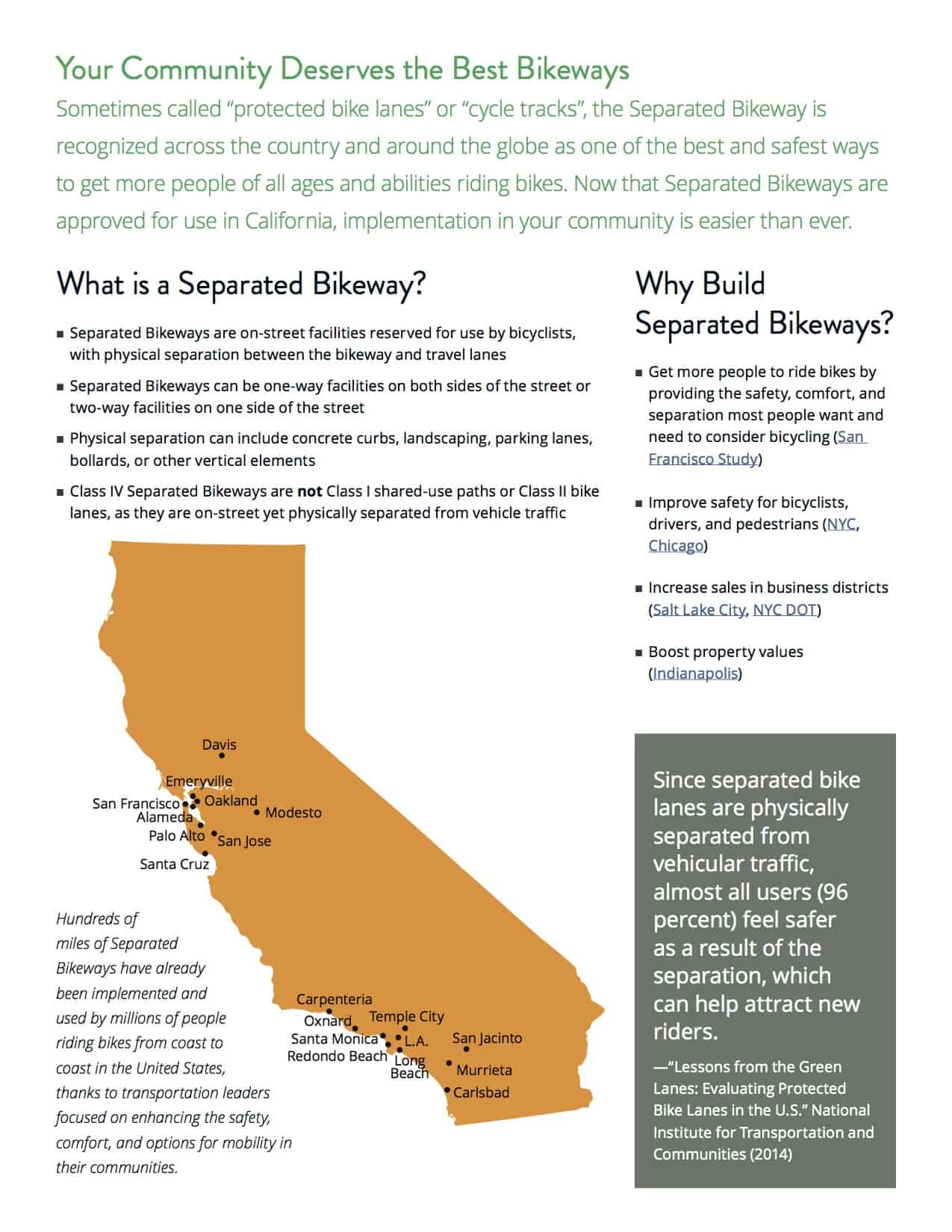
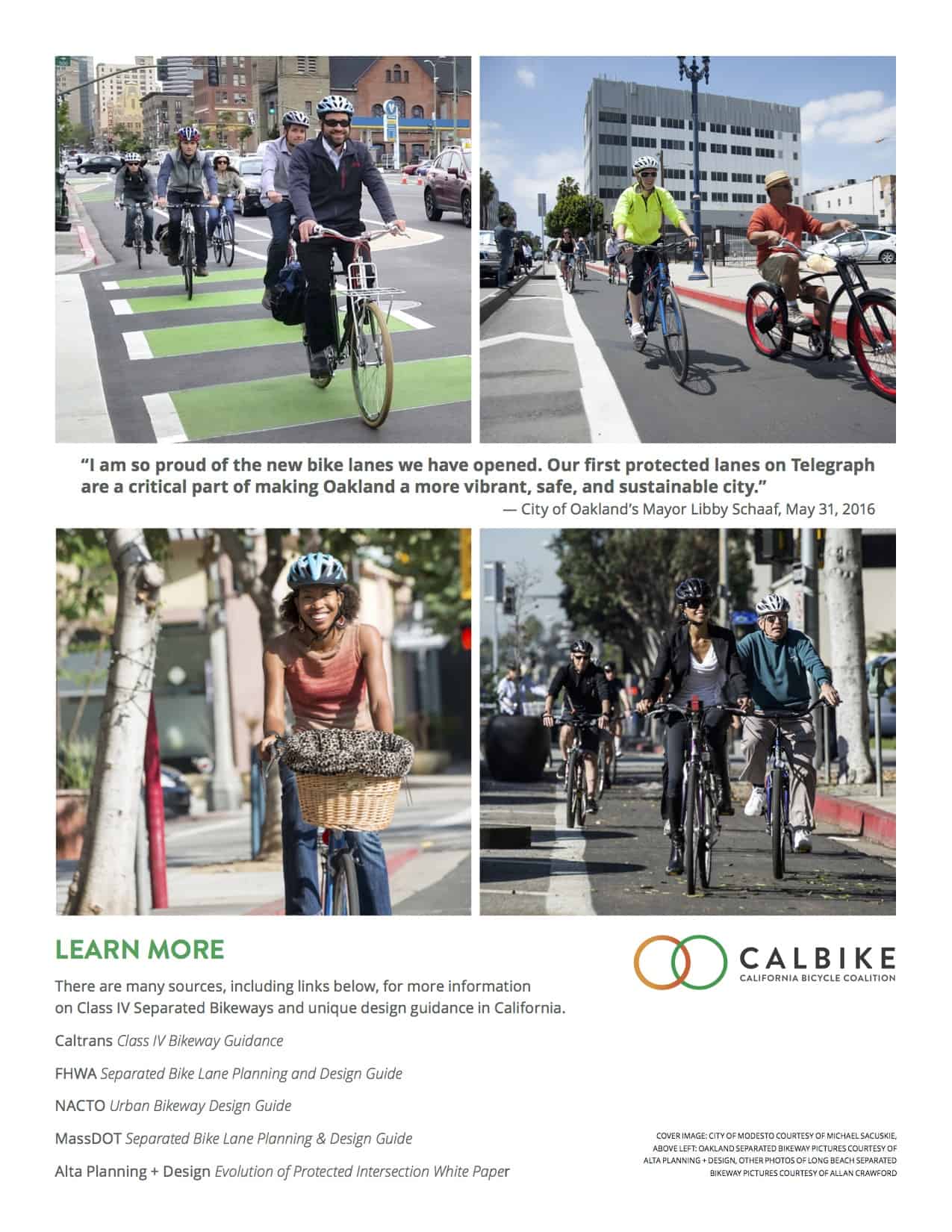
‘
Protected bikeways popping up all over
You may have noticed a proliferation of Class IV bikeways in your community, along with innovative ways to create the separation, such as putting parked cars between bike riders and traffic. Robert Prinz, advocacy director for Bike East Bay, shared this chart showing the explosive growth of protected bikeways in East Bay communities.
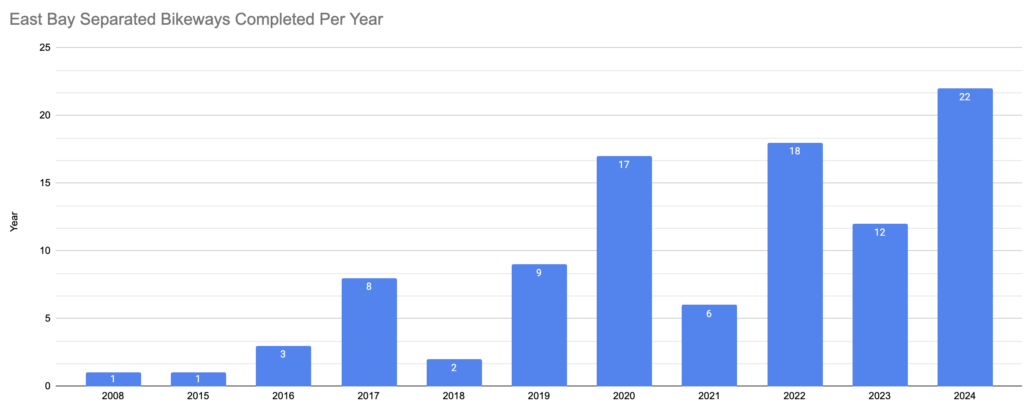
Prinz told us that, in the cities that have built protected bikeways, more are going up. But, he said, “There are still a lot of areas where there has been no movement, now almost nine years after they were officially permitted.”
Separated bikeways breed more separated bikeways. “In the areas where more projects have been built, there is a growing acceptance and appreciation for the value of separated bikeways, but in places where they aren’t as common, we are still often starting at square one, regardless of progress a few towns over,” Prinz said. “One of my goals here in the East Bay is to have at least one Class IV bikeway project on the ground in every one of these places within five years, but even this will be a challenge.”
In the 10 years since CalBike helped pass the Protected Bikeways Act, Class IV protected lanes have become the gold standard for bicycling infrastructure in California. It’s an example of what CalBike does best. Changing the standards for bikeway design at the state level may sound wonky and obscure, but it paved the way for safer streets for thousands of Californians, and we continue to reap the benefits today.





